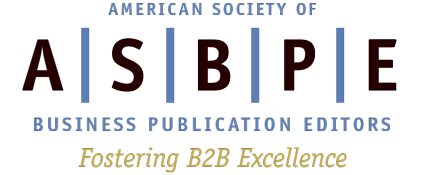Contributed content is the lifeblood for B2B publications. When managed well, it adds a rich diversity of expert voices to your publication and helps meet the ever-growing need for original content in digital-first publishing strategies. But when not managed well, it can blur the line between editorial and advertising and pose both ethical and business problems for your organization.

Typically, B2B publications have three primary sources for contributed content: readers, industry consultants, and vendors. Let’s take a look at each of them.
Readers
Well-written, insightful and useful articles from readers represent the gold standard for contributed content. And unless they are a case study for a particular product or company, they rarely pose an ethical problem. However, the willingness and ability of your readers to write for your publication will depend on the industry you serve, and you may need to rely more heavily on consultants and vendors.
Consultants
Columns from industry consultants can fall into an ethical grey zone. On one hand, these folks have deep knowledge and expertise about the topics you cover, and their columns can be very useful to your readers. On the other hand, they clearly have a promotional agenda for contributing to your publication. If they didn’t think they might get clients by writing for your magazine, they wouldn’t take the time to do it.
In my view, giving consultants a self-promotion opportunity in exchange for lending their subject-matter expertise to your publication is an acceptable bargain for B2B editors, with these caveats: the columns must consistently provide useful information to readers; they must not overtly solicit business; and no consultant should appear in every print issue or with undue frequency online.
Vendors
Vendor-supplied columns represent an ethical minefield for B2B publications. Even if you insist that they be true thought-leadership essays devoid of any promotional content you can run into trouble. This scenario explains why:
Let’s say you have two vendor-authored opinion pieces on-hand but space for just one of them in the upcoming print issue. In terms of quality, they’re about the same—not great, not terrible, not unduly self-promotional. Further, let’s say Column A is from the CEO of a company that advertises in every issue, while Column B is from the CEO of a company that never advertises. The dilemma is obvious. Run Column A and you’ll be tarred with a pay-to-play brush. Run Column B and your publisher will catch hell from the big advertiser. Both outcomes are bad for business, and your career.
At the magazines I led, we addressed this problem for many years by simply banning contributed content from anyone who was affiliated with a company that sold products to our readers. It was a clean and easily enforced rule, and we were even able to convert many of the vendor submissions into paid advertorials (clearly labeled and laid out as sponsored content, of course).
But then two things occurred. First, vendors’ interest in buying print advertising of any kind—including advertorials—dropped. Second, we adopted a digital-first publishing strategy, which demanded more content. So we began accepting contributed content from vendors, with these caveats:
- They have to display thought leadership and must not be self-promotional in any way; in fact, the only place they can reference their company is in the credit line at the end of the article.
- They only run online; the limited space available in the print magazines is reserved for contributed content from readers and consultants.
Incidentally, that second rule neatly resolves the dilemma described above. If you were to post both those submissions on your website, where space is virtually unlimited, and promote them in the same or consecutive editions of your newsletter, everyone—the vendors, your readers and your publisher—will be satisfied.
Here are some other tips for avoiding ethical pitfalls in contributed content:
Beware of ghosts
Watch out for vendor-commissioned, ghost-written reader contributions that promote a product or company. Some vendors engage PR agencies to ghost-write articles for their customers and then arrange for those customers to submit the articles to industry publications. Typically these are case studies about how a particular product or company solved a problem for the author. Sometimes the promotional angle is more subtle: the article may address a broad problem with only a brief reference to a specific product as an example of a valuable resource.
Take care with credit lines
Make sure credit lines for articles written by consultants and vendors aren’t promotional and are uniform in length. Keep them to essential information: name, title, organization, location—plus a very succinct description of the author’s or firm’s specialty. Including the author’s email address is helpful to readers, but I recommend not including the firm’s website address.
Post submission guidelines
Develop detailed submission guidelines and publish them on your site. The guidelines should clearly state that articles promoting or endorsing a specific company or product will not be accepted. Here are submission guidelines for one of the magazines I led.
Diversity, diversity, diversity!
Finally, and perhaps most importantly, make sure your contributed content comes from a broad and diverse cross-section of your community. This can be a challenge, especially if you rely primarily on unsolicited contributions. The only way to ensure diversity is to actively seek it, which takes time, effort and commitment. (At my former publications, curating contributed content was a defined responsibility for a specific editor, generally taking 25% of their time.)
By setting firm guidelines and taking the time to carefully curate contributed content, you can provide your readers with a wide variety of expert voices while avoiding ethical landmines that can damage your reputation and bottom line.
JD Solomon serves on the ASBPE Board of Directors and is chair of the ethics and program committees. Earlier, he was the editorial director for two sister publications that covered the education sector.
